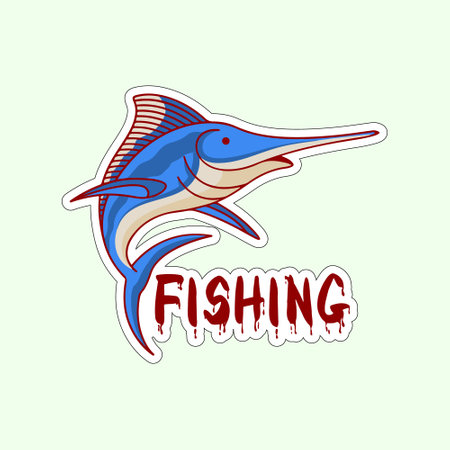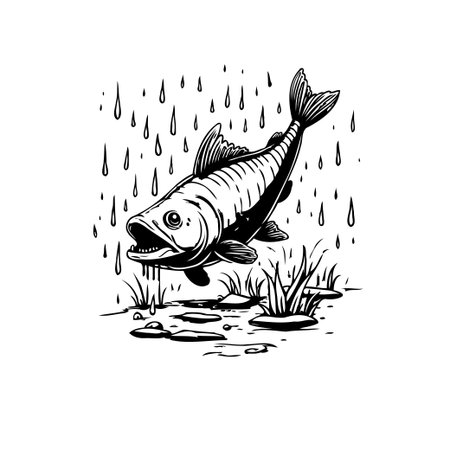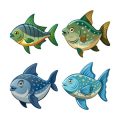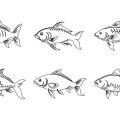Introduction: The Importance of Sustainable Fishing in India
India’s coastline stretches over 7,500 kilometers, providing livelihoods to millions of fishermen and supporting vibrant coastal communities. In this dynamic environment, sustainable fishing is not just a buzzword—it’s the backbone of survival for countless Indian families. When we talk about sustainability, we’re referring to practices that balance today’s needs with tomorrow’s resources, ensuring our marine biodiversity remains intact for future generations. For Indian fishermen, adopting sustainable fishing means securing their income, protecting traditional knowledge, and preserving cultural heritage deeply rooted in the ocean. The rich biodiversity found in India’s protected marine areas—from the coral reefs of Lakshadweep to the mangroves of Sundarbans—relies on responsible fishing practices. Overfishing and destructive methods threaten not only fish stocks but also the prosperity and long-term resilience of entire coastal regions. Therefore, awareness programs on sustainable fishing are vital—they empower fishermen with modern strategies, gear upgrades, and community-driven solutions tailored for Indian waters. By embracing these initiatives, Indian fishermen become champions of their own future, ensuring that both livelihoods and marine ecosystems can thrive together.
Understanding Protected Areas and Government Guidelines
Marine protected areas (MPAs) in India are special zones established to conserve marine biodiversity, support fish stocks, and safeguard the livelihoods of coastal communities. The Indian government recognises over 130 MPAs across states like Kerala, Tamil Nadu, Maharashtra, Odisha, and the Andaman & Nicobar Islands. These zones include national parks, wildlife sanctuaries, and community reserves that play a crucial role in balancing ecological needs with sustainable fishing practices. To ensure responsible resource use, there are several laws and guidelines that all Indian fishermen must be aware of.
Key Legal Frameworks
| Law/Notification | Purpose |
|---|---|
| Coastal Regulation Zone (CRZ) Notification | Regulates activities along Indias coastline to protect fragile ecosystems and restricts certain fishing practices near sensitive areas. |
| Wildlife Protection Act, 1972 | Bans destructive fishing methods within designated protected areas to preserve marine species and habitats. |
| State Fisheries Acts | Imposes seasonal bans, mesh size regulations, and licensing requirements specific to each state. |
Key Dos and Donts for Fishermen in Protected Areas
| Dos | Donts |
|---|---|
| – Follow local mesh size regulations – Use traditional or eco-friendly gear – Report illegal activities to authorities – Participate in awareness meetings organised by fisheries departments |
– Avoid using explosives or chemicals – Do not fish during closed seasons – Refrain from entering no-fishing zones – Never discard plastic or non-biodegradable waste at sea |
Local Governance: A Community Responsibility
Panchayats and fisheries cooperatives often work with government agencies to enforce these rules on the ground. By respecting local customs and collaborating with authorities, Indian fishermen can help maintain the balance between tradition, livelihood security, and conservation goals. Awareness programs are key tools for ensuring that every fisherman understands both the spirit and the letter of these guidelines.

3. Community Awareness and Education Strategies
Harnessing Grassroots-Level Initiatives
For awareness programs on sustainable fishing in protected areas to truly resonate with Indian fishermen, it is crucial to anchor these efforts at the grassroots level. The involvement of local fishing communities ensures that information is relatable and actionable. Grassroots initiatives, such as village meetings (gram sabhas) and fisherfolk gatherings, foster direct dialogue about the importance of sustainable practices within marine protected zones. By encouraging peer-to-peer learning, these programs become more impactful and create a ripple effect across coastal villages.
Folk Media: Speaking the Local Language
India’s rich tradition of folk media—such as street plays (nukkad nataks), puppet shows, traditional songs, and storytelling—offers a powerful channel for spreading awareness. These culturally rooted art forms use familiar dialects and local idioms, ensuring that messages about responsible fishing are understood and remembered. Folk artists can dramatise real-life scenarios faced by fishermen, making complex ecological concepts both accessible and engaging.
Interactive Workshops for Skill Enhancement
Workshops organised in collaboration with NGOs, research institutes, and government fisheries departments are instrumental in equipping fishermen with hands-on skills for sustainable fishing. Interactive sessions cover topics such as species identification, seasonal restrictions (ban periods), gear modifications, and catch documentation. Through live demonstrations and group activities, fishermen gain practical knowledge they can immediately apply during their daily operations in protected areas.
Knowledge-Sharing Platforms
To encourage ongoing learning and adaptation, regular knowledge-sharing sessions are established within communities. Experienced fishermen share success stories about adopting sustainable techniques, while experts address doubts regarding compliance with regulations like the Coastal Regulation Zone (CRZ) norms. These platforms cultivate a sense of camaraderie and inspire collective responsibility among Indian fisherfolk.
The Role of Local Leaders and Influencers
Village panchayat heads, respected elders, women leaders from self-help groups (SHGs), and prominent boat owners act as influencers who champion sustainable fishing norms. Their endorsement lends credibility to awareness programs, motivating others to follow suit. By integrating local leadership into program delivery—whether through public pledges or participatory monitoring—communities move from passive awareness to active stewardship of India’s precious aquatic resources.
Traditional Wisdom and Modern Sustainable Techniques
India’s coastal communities have relied on the sea for centuries, developing time-honoured fishing techniques rooted in harmony with nature. Awareness programs on sustainable fishing in protected areas are now emphasising the need to bridge these age-old practices with modern, eco-friendly methods. This fusion not only honours traditional knowledge but also addresses contemporary challenges such as overfishing and habitat depletion. By integrating ancient wisdom—like respecting breeding seasons and using selective gear—with scientific advancements, Indian fishermen can sustain their livelihoods while preserving marine biodiversity.
Combining Tradition with Innovation
Sustainable fishing awareness programs encourage Indian fishermen to adopt best gear selection strategies that align with both tradition and sustainability. For example, replacing non-selective nets with selective ones helps reduce bycatch and supports the recovery of fish stocks. Training sessions illustrate how combining local experience—such as identifying migratory patterns or spawning grounds—with new technologies like GPS tracking and biodegradable nets can enhance efficiency without harming sensitive ecosystems.
Best Gear Selection: Traditional vs Modern
| Aspect | Traditional Practices | Modern Sustainable Methods |
|---|---|---|
| Gear Type | Coconut leaf traps, handlines | Selective gillnets, circle hooks, biodegradable nets |
| Harvesting Approach | Seasonal fishing, respecting no-catch periods | Quota management, real-time monitoring apps |
| Community Management | Panchayat rules & taboos | Co-management with authorities, data-driven decisions |
Responsible Harvesting: A Competitive Advantage
The gear warriors of India’s coasts are discovering that responsible harvesting is not just about conservation—it also builds a competitive edge. By strictly following sustainable harvesting protocols in protected areas, fishermen ensure that resources remain abundant for future generations. This approach resonates deeply with traditional values of stewardship and collective responsibility found in Indian fishing villages, while leveraging modern science to secure a resilient and profitable future.
5. Tools, Equipment, and Safety Measures for Sustainable Fishing
Eco-Friendly Gear: Practical Choices for Indian Fishermen
Awareness programs on sustainable fishing in protected areas are empowering Indian fishermen with knowledge about practical and eco-friendly gear. Traditional nets often capture juvenile fish and non-target species, damaging the ecosystem. Instead, these programs introduce cost-effective alternatives such as selective mesh nets and circle hooks, which reduce bycatch and allow young fish to escape. These tools are easy to repair and maintain, using locally available materials so that even small-scale fishermen can adapt without financial burden.
Adopting Affordable Technology for Daily Use
Technology need not be expensive or complicated. Mobile-based GPS trackers and fish finders compatible with budget smartphones help fishermen avoid restricted zones and minimize unnecessary fuel use. Solar-powered lights for night fishing not only reduce operational costs but also ensure compliance with local regulations on fishing hours. NGOs and government agencies often offer training sessions to demonstrate how to use these technologies, ensuring that fishermen from all backgrounds can benefit.
Cost-Effectiveness and Maintenance: A Key Focus
Sustainable equipment promoted in awareness programs is chosen with affordability in mind. For instance, biodegradable fishing lines, though new in the market, are subsidized through community cooperatives or government schemes. Repair kits for eco-friendly nets are distributed during workshops so that minor damages do not force fishermen to revert to unsustainable practices. Regular maintenance routines—like cleaning gear after use and checking boat engines—are emphasized as simple habits that extend the lifespan of equipment and reduce long-term costs.
Prioritizing Safety While Protecting the Environment
Sustainable fishing is not just about protecting marine life but also about ensuring the safety of those at sea. Training modules include demonstrations on using personal flotation devices (PFDs), first-aid kits, and safe anchoring techniques suitable for India’s diverse coastlines and river systems. Fishermen are taught how to respond to emergencies while minimizing ecological impact, such as handling accidental oil spills or releasing endangered species caught by mistake. This holistic approach ensures that both livelihoods and nature are safeguarded for future generations.
Role of Fishermen’s Collectives and Stakeholder Collaboration
In India, the spirit of unity is deeply rooted in community life, especially among fishermen who rely on each other for both their livelihoods and safety at sea. When it comes to sustainable fishing in protected areas, this unity takes on even greater importance.
The Power of Fishermen’s Collectives
Fishermen’s collectives and fishery co-operatives are traditional pillars in Indian coastal communities. By coming together, these groups can share knowledge about sustainable practices, ensure that all members are aware of the latest regulations, and support each other in adopting eco-friendly gear and methods. The collective voice also helps advocate for local needs while ensuring compliance with protected area guidelines.
Collaboration with NGOs
Non-governmental organisations (NGOs) play a crucial role in delivering awareness programs. They bring technical expertise, educational materials in regional languages, and workshops tailored to the realities of Indian fishermen. NGOs often act as a bridge between fishing communities and policymakers, ensuring that awareness campaigns are grounded in both scientific knowledge and traditional wisdom.
Government Agencies: Enabling Change
Support from government bodies such as the Department of Fisheries and the Marine Police further amplifies the impact of awareness initiatives. Their involvement ensures legal backing, provides funding for capacity-building workshops, and facilitates access to updated information on protected areas.
Amplifying Impact through Collaboration
When fishermen’s collectives join forces with NGOs and government agencies, they create a powerful alliance. This collaboration not only increases participation in awareness programs but also builds trust within the community. Together, they can organise large-scale training events, distribute sustainable gear like circle hooks or turtle excluder devices, and monitor compliance more effectively.
Ultimately, this united approach empowers Indian fishermen to become champions of conservation while safeguarding their own economic security—a win-win for both marine ecosystems and local livelihoods.
7. Success Stories and Call to Action
Showcasing Positive Change: Real-Life Indian Examples
Across India’s diverse coastal regions, several communities have demonstrated the powerful outcomes of awareness programs on sustainable fishing in protected areas. In Kerala, local fishermen from the Malabar coast participated in targeted workshops on responsible fishing practices and marine conservation. As a result, there was a notable 25% reduction in illegal net usage within the Vembanad Lake protected zones over two years. This not only led to healthier fish stocks but also improved catches for future seasons, making the initiative popular among both elders and youth.
Community-Driven Initiatives: Pride and Progress
In Tamil Nadu’s Gulf of Mannar, fisherwomen’s self-help groups collaborated with NGOs to spread awareness about seasonal fishing bans and turtle protection zones. Their collective efforts fostered community monitoring patrols that drastically reduced turtle bycatch incidents by more than half. Such achievements have become a matter of pride during local festivals and panchayat meetings, reinforcing a sense of ownership and unity among the villagers.
The Road Ahead: Your Role Matters
These inspiring stories prove that when Indian fishermen embrace sustainable practices through well-designed awareness campaigns, everyone benefits — from families relying on daily catches to future generations who will inherit our seas. Now is the time to join hands and support ongoing training sessions, share your success stories with your neighbours, and encourage youth participation in eco-friendly fishing. Let us work together, as proud stewards of our waters, ensuring that India’s protected areas remain vibrant and bountiful for all.


